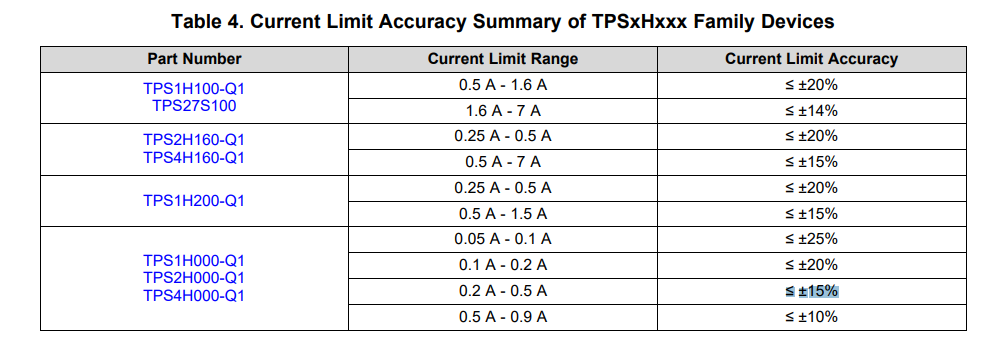Hello,
for a new project at 30V, I have to drive 2 outputs with a maximum current of 300mA and I want to try to use TPS2H000-Q1.
I noted there's the CL (Current Limit) pin, where I can connect an external resistor to ground. This pin can be connect directly to ground to high current limit.
1) In the data sheet it's written the internal current limit when CL is connect to ground and the minimum value is 1A and maximum value is 1,6A. This range is very wide. In this way, I can not have a precise maximum current value to design the power supply.
2) Because I want 300mA maximum current on load, I want to use an external current limiter using an external resistor between pin CL and ground. But I read the accuracy is up to +/-25%... is it correct? If it's correct, is it mean the current limit is between 225mA to 375mA. But which is the reason of this bad accuracy?
3) do I need to use an external resistor for current limit?
Thank You and Best Regards
Federico Battaglin



